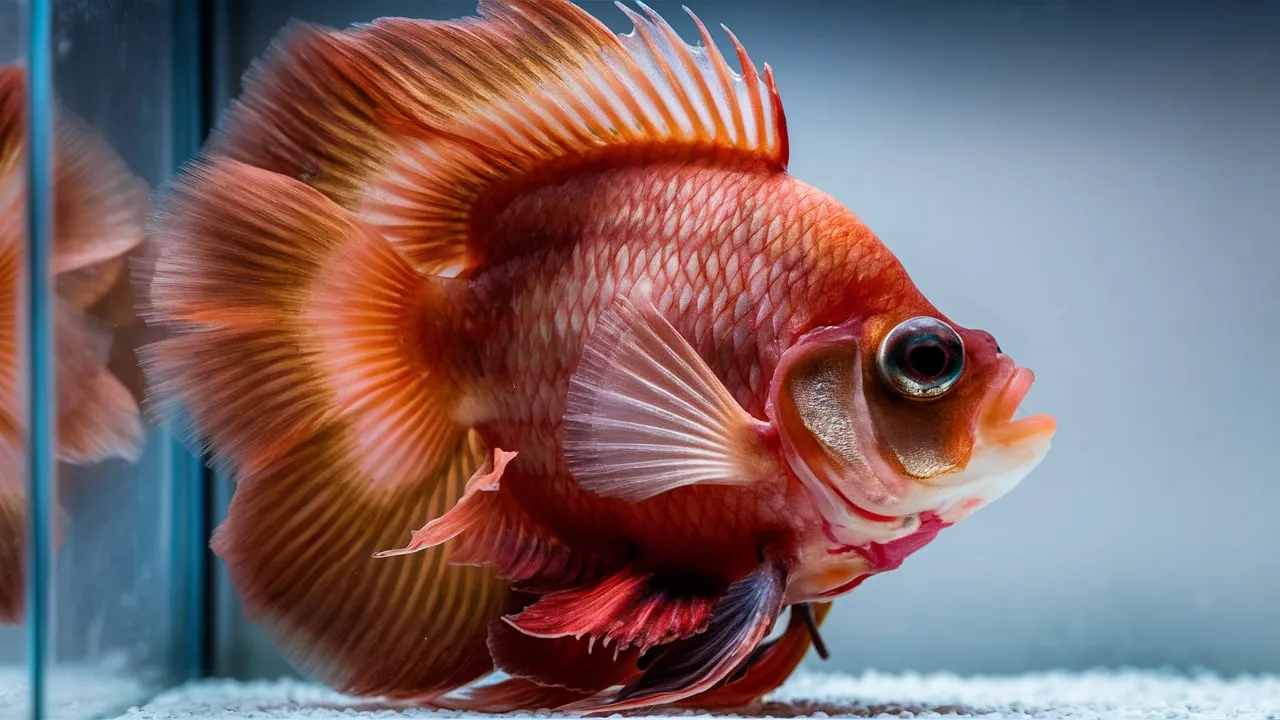Siamese fighting fish, also known as Betta fish, are a popular choice among aquarium enthusiasts due to their vibrant colors and unique personalities. However, like any living creature, these fascinating fish can face a variety of health issues that require attentive care and proper management. In this comprehensive guide, we will explore the common health problems associated with Siamese fighting fish, their symptoms, causes, and effective treatment strategies to ensure the well-being of your beloved Betta.
Siamese Fighting Fish Health Problems

Fin Rot
Fin rot is a common bacterial infection that afflicts many aquarium fish. This condition manifests as a gradual deterioration of the fish’s fins and tail, often characterized by frayed, discolored, or even missing fin tissue. The root causes of fin rot are typically linked to poor water quality, which creates an environment conducive to bacterial growth. Additionally, stress, whether caused by overcrowding, aggressive tank mates, or improper handling, can weaken a fish’s immune system, making it more susceptible to infection. Injuries to the fins can also serve as entry points for bacteria, initiating the development of fin rot.
Ich (White Spot Disease)
Ich, a prevalent parasitic infection often referred to as white spot disease, is a common affliction among aquarium fish. Its hallmark symptom is the appearance of tiny, white, grain-like spots on the fish’s body and fins, resembling salt grains. As the infection progresses, affected fish may exhibit a range of distressing signs, including increased respiratory rate, a noticeable loss of appetite, and lethargy. These symptoms collectively indicate the fish is struggling to cope with the parasitic burden. Early detection and appropriate treatment are crucial to prevent the infection from spreading to other tank inhabitants and to ensure the affected fish’s recovery.
Swim Bladder Disorder
Swim bladder disorder is a common ailment affecting aquarium fish, disrupting their ability to maintain proper buoyancy. Symptoms of this condition manifest in abnormal swimming behaviors, such as floating at the water’s surface or sinking to the bottom of the tank. The underlying causes of swim bladder disorder are varied and can include overfeeding, leading to constipation and internal pressure on the swim bladder. Additionally, developmental issues or underlying health problems may also contribute to this condition. Recognizing the signs and understanding potential causes is essential for providing appropriate care and treatment to affected fish.
Betta Bloat
Betta bloat, often referred to as dropsy, is a grave health condition that can be fatal for Betta fish. Characterized by a visibly swollen and rounded appearance, resembling a pinecone, this condition is caused by the accumulation of excess fluid within the fish’s body. The underlying causes of bloat are often multifactorial and can include poor water quality, which creates a breeding ground for harmful bacteria. Bacterial infections can directly attack the fish’s organs, leading to inflammation and fluid retention. Additionally, organ failure, such as kidney or liver dysfunction, can disrupt the body’s fluid balance and contribute to the development of bloat. Given the severity of this condition and the underlying causes, it is crucial to address water quality issues, provide appropriate medications, and seek professional veterinary care if possible.
Ammonia and Nitrite Poisoning
Ammonia and nitrite levels pose a severe threat to the health and well-being of Siamese fighting fish. When these toxic compounds accumulate in the aquarium water, they can cause irreparable damage to the fish’s delicate gill tissue. As the gills are responsible for oxygen exchange, their impairment severely compromises the fish’s ability to breathe. Consequently, affected fish often exhibit symptoms such as reduced appetite, lethargy, and labored breathing. Prolonged exposure to elevated ammonia and nitrite levels can lead to organ failure and, ultimately, death. Maintaining optimal water quality through regular water changes and efficient filtration is paramount to preventing these devastating consequences.
Preventive Measures and Treatment Strategies
Maintaining a healthy environment for your Siamese fighting fish is essential in preventing and managing various health issues. This includes:
- Performing regular water changes to keep the water clean and well-oxygenated.
- Monitoring and maintaining appropriate water parameters, such as pH, temperature, and water hardness.
- Providing a stress-free environment by avoiding overcrowding and limiting aggressive tank mates.
- Feeding a balanced and appropriate diet in moderation to prevent digestive issues.
- Quarantining new fish to prevent the introduction of diseases.
- Seeking professional veterinary advice for proper diagnosis and treatment of more severe or persistent health problems.
By understanding the common health challenges faced by Siamese fighting fish and implementing proactive measures, you can effectively maintain the well-being of your beloved aquatic companions and enjoy their vibrant beauty for years to come.
Conclusion
With information of Betta Fish 247 about Siamese fighting fish, with their captivating colors and personalities, have become beloved companions for many aquarium enthusiasts. However, it is crucial to be aware of the potential health problems that these fish may encounter and take the necessary steps to prevent and address them. By following the guidelines outlined in this comprehensive guide, you can ensure the long-term health and happiness of your Betta fish, allowing you to fully appreciate the joy and wonder of these fascinating creatures.

Related Posts
Female Betta Care: A Comprehensive Guide
Understanding Betta Fish Water
What Are Clamped Fins On Betta?